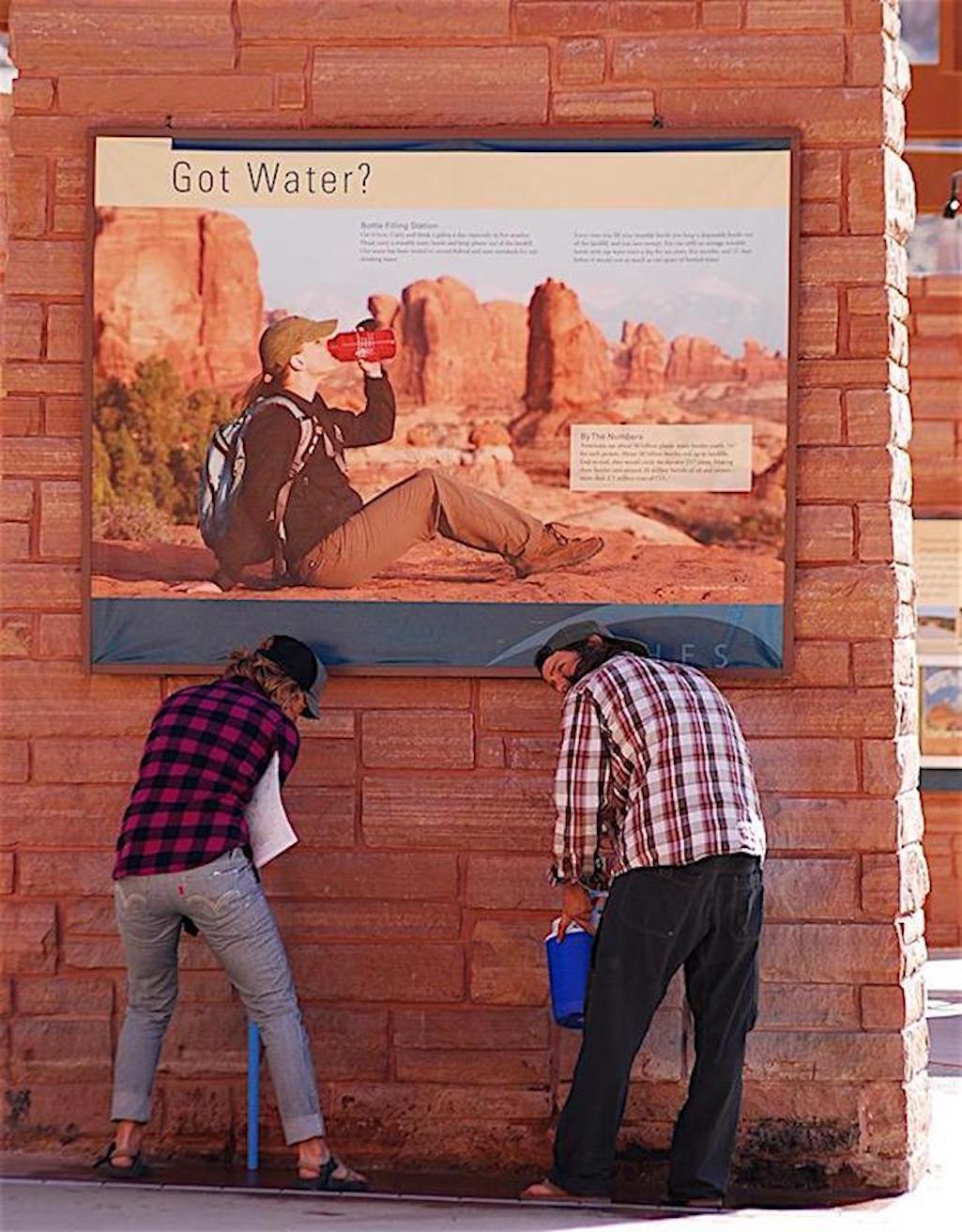
While other agencies are moving quickly to end sales of disposable plastic bottles, the National Park Service has a ten-year-plan/Kurt Repanshek file
A dozen years after Coca Cola reportedly was behind the National Park Service delay in banning disposable water bottles at Grand Canyon National Park, the agency again is dragging its feet on implementing a plastics ban, according to Public Employees for Environmental Responsibility.
According to the nonprofit organization, the Park Service's plan is "is weaker than any proposed by Interior Department agencies and would not produce visible progress until late this decade."
In June 2022, the White House announced that the Interior Department would reduce and eventually phase out the sale of single-use plastic products in national parks, wildlife refuges, and other public lands. The news came after more than 300 organizations and nearly 70,000 individuals called on Interior to take action.
"The Park Service’s plan is a disappointing ‘plan to plan’ without any near-term steps for meaningful plastic reduction,” Rocky Mountain PEER Director Chandra Rosenthal said Tuesday. “This plan is strong on time-consuming bureaucracy and short on any concrete actions.”
Back in November 2011 efforts to showcase the Park Service's commitment to a green environment were partially derailed when Coca Cola raised concerns over plans to ban disposable water bottles at the Grand Canyon with then-Park Service Chief Jon Jarvis, who blocked the ban. Coca Cola officials approached both the agency directly and the National Park Foundation with its concerns, according to a report in the New York Times. Coca Cola is a major player in bottled water through its Dasani brand.
The bottle ban had been in the works for some time. In anticipation of it, Grand Canyon crews early in 2011 installed nine free water supply stations throughout the park at a cost of more than $300,000, PEER calculated at the time. Six were installed on the South Rim, three on the North Rim.
While the Obama administration allowed individual parks to ban sales of the disposable bottles, the Trump administration reversed that move, with then-acting Park Service Director Michael Reynolds saying "it should be up to our visitors to decide how best to keep themselves and their families hydrated during a visit to a national park, particularly during hot summer visitation periods."
In June 2021, PEER along with GreenLatinos and Beyond Plastics launched a campaign to prompt the Park Service to renew the ban and work toward a larger effort to reduce plastic wastes in parks. The campaign also included a petition for the general public to sign on in support of the ban.
At the time, the groups said plastic bottles were the single biggest component of park waste streams. Yellowstone National Park staff and others "estimate that plastic bottles constitute fully half of its entire trash load," they added.
"Besides the cost of hauling that trash away, the volume of plastic bottles sold in parks consumes large amounts of energy and adds to the carbon footprint of park operations," they added. "In addition, parks are contributors to the growing plague of plastic pollution afflicting the planet."
More than 2 million pounds of microplastics, the equivalent of 123 million plastic bottles, settle on national parks and other public lands in the West each year, adding to the growing pollution loads these protected areas carry, according to a 2020 study released by Utah State University researchers.
During the fall of 2019, a U.S. Geological Survey report cited microscopic plastic particles found in high-country lakes in Rocky Mountain National Park in Colorado. While Gregory Wetherbee was studying nitrogen pollution in the park, he found that more than 90 percent of his samples contained colorful plastic particles. Some turned up in a lake above 10,300 feet in elevation.
While the Biden administration is again moving to block the plastics from the National Park System, it's moving too slowly, PEER maintains.
The NPS plan was unveiled on September 28, the group said, adding that it:
- Devotes the next two years to “policy development” with no significant implementation slated to begin until five years out;
- Allows individual parks to continue executing new multi-year concession contracts for concession sales of disposable plastic water bottles to visitors; and
- Hamstrings individual parks from moving faster, since any park-specific plastic use reductions would require Washington Office approval.
By contrast, PEER said, under the U.S. Fish and Wildlife Service's approach, the more than 500 units of the National Wildlife Refuges System would cut plastic use by 25 percent by the end of 2024, and end the sale of any single-use plastics in all new concessions contracts. The U.S. Bureau of Land Management plans to fully reduce single plastic use by the end of FY2027, before the NPS will have even begun any reductions, the group added.
“Under what is proposed, single-use plastics will remain the single biggest component of waste in national parks for years to come,” said PEER Litigation and Policy Attorney Colleen Teubner, pointing to the failure of the “Green Parks Plan” under Obama. “The extremely slow implementation schedule offers ample opportunities for a big, distracted bureaucracy to place this effort on a backburner and then eventually to abandon it altogether.”

 Support Essential Coverage of Essential Places
Support Essential Coverage of Essential Places







Comments
Why? Because the cost and inconvenience far outweigh any benefits.